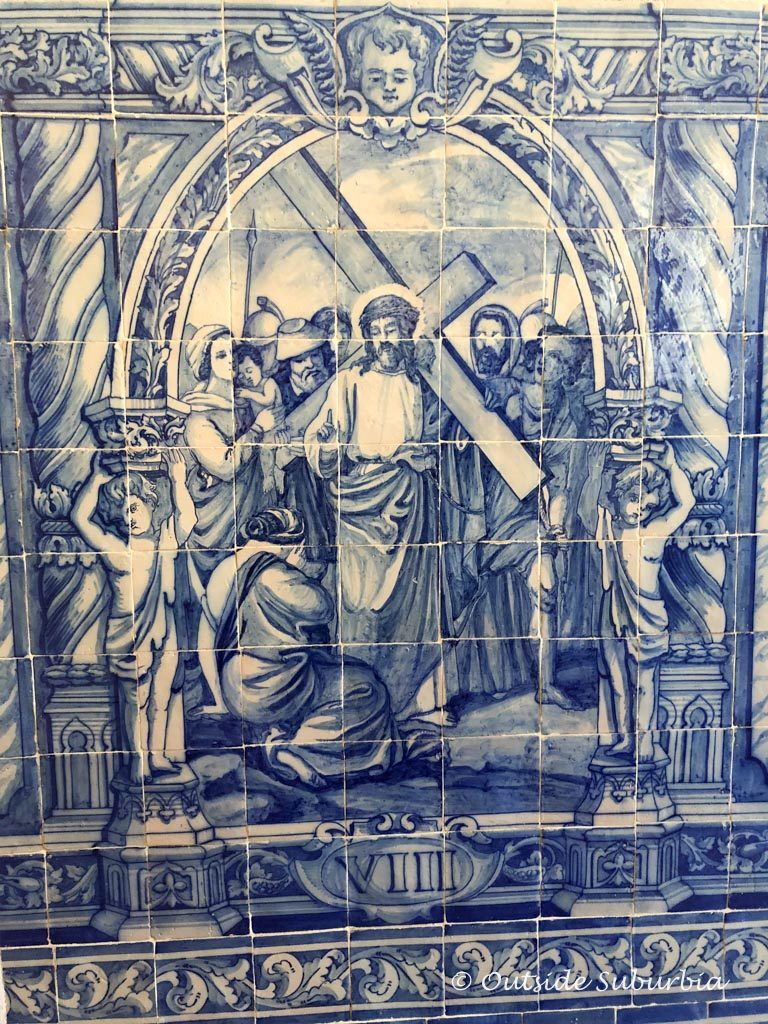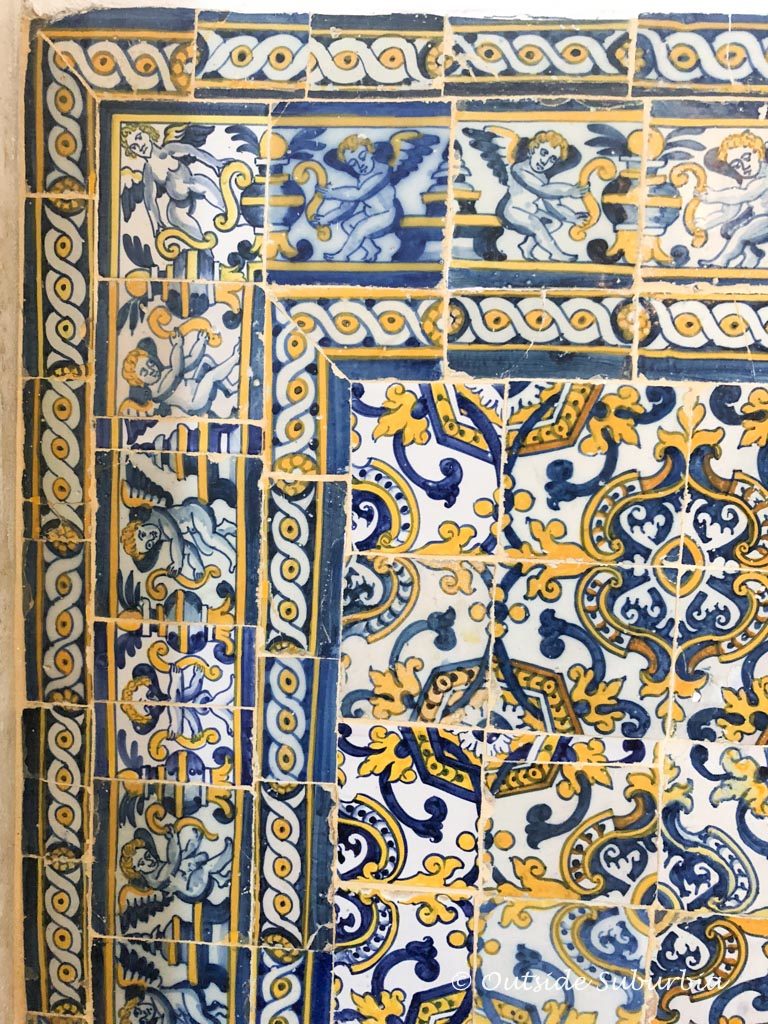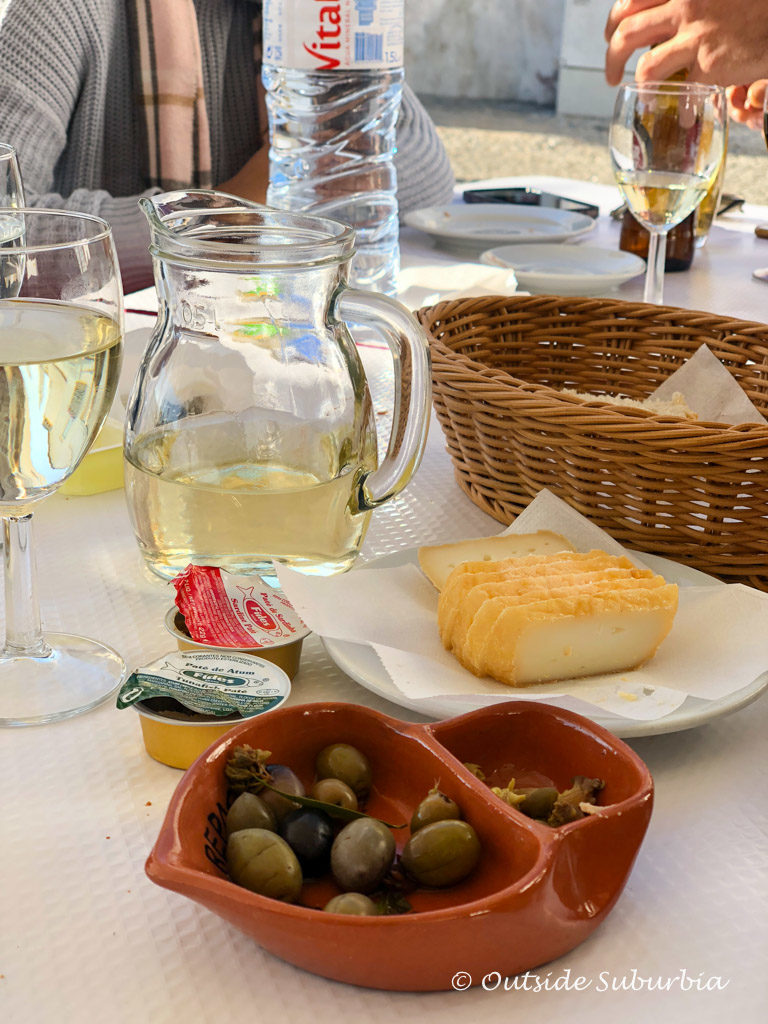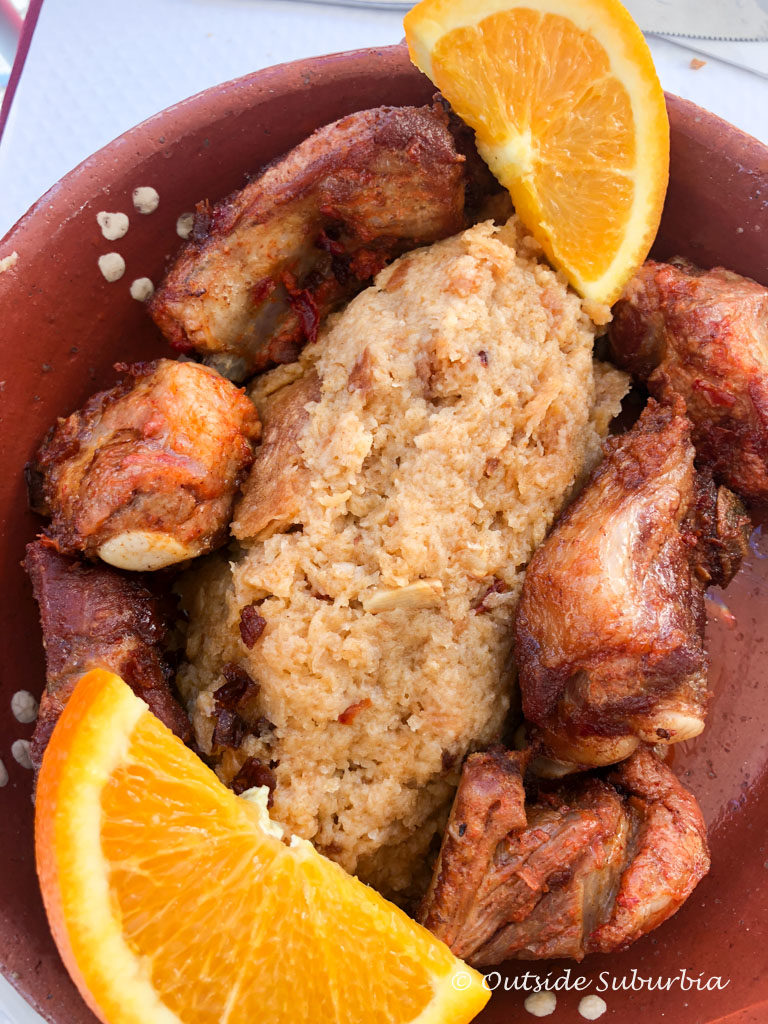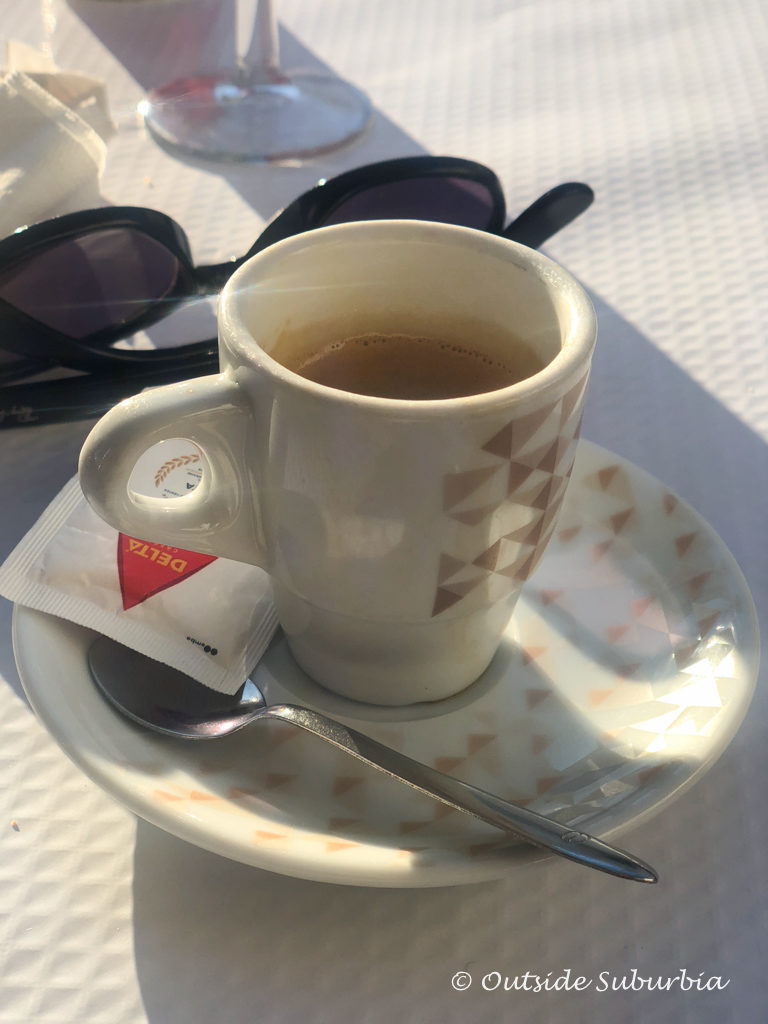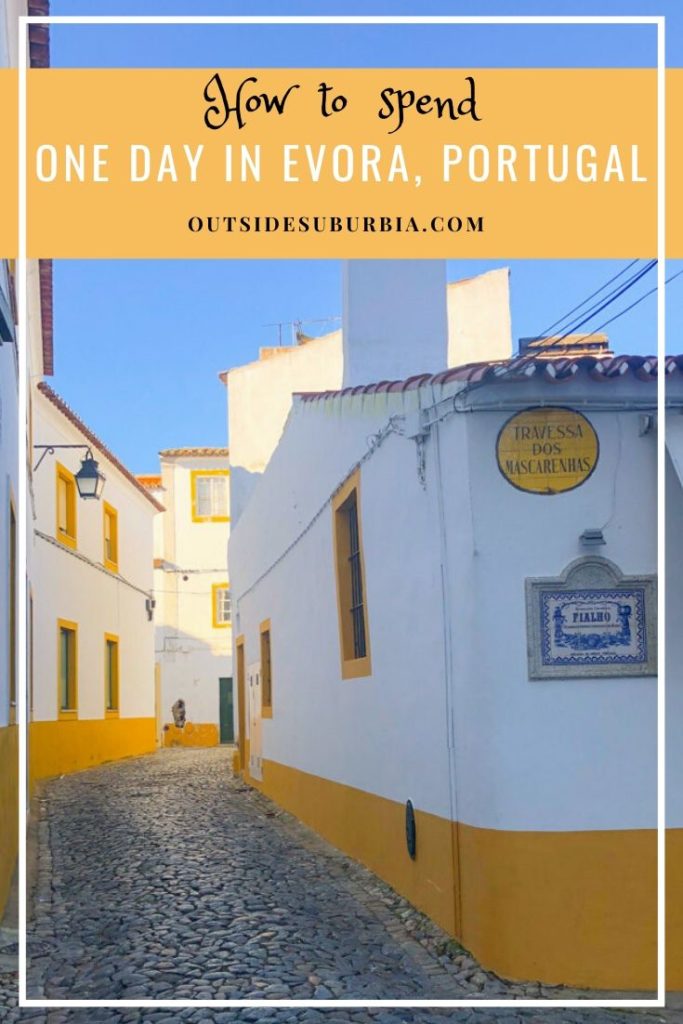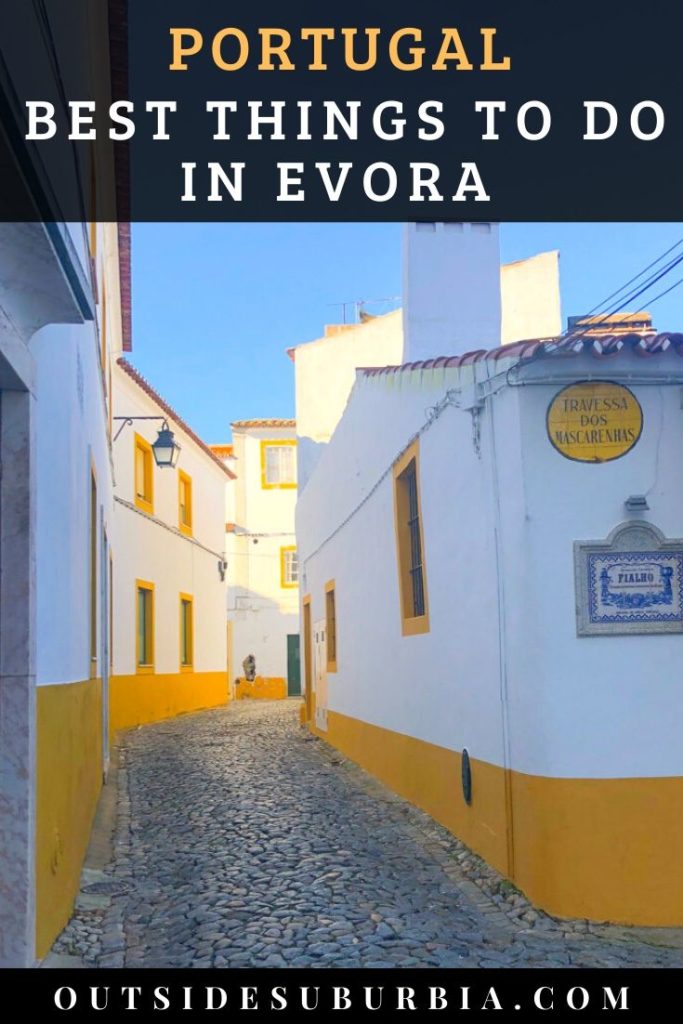Evora Portugal with its Roman ruins, a 12th-century cathedral, an eerie chapel of bones along with charming cobblestoned streets lined whitewashed houses trimmed with bright yellow borders deserves a spot on your itinerary! Listed as UNESCO world heritage site Evora has become one of the top destinations in Portugal and is a popular day trip from Lisbon.
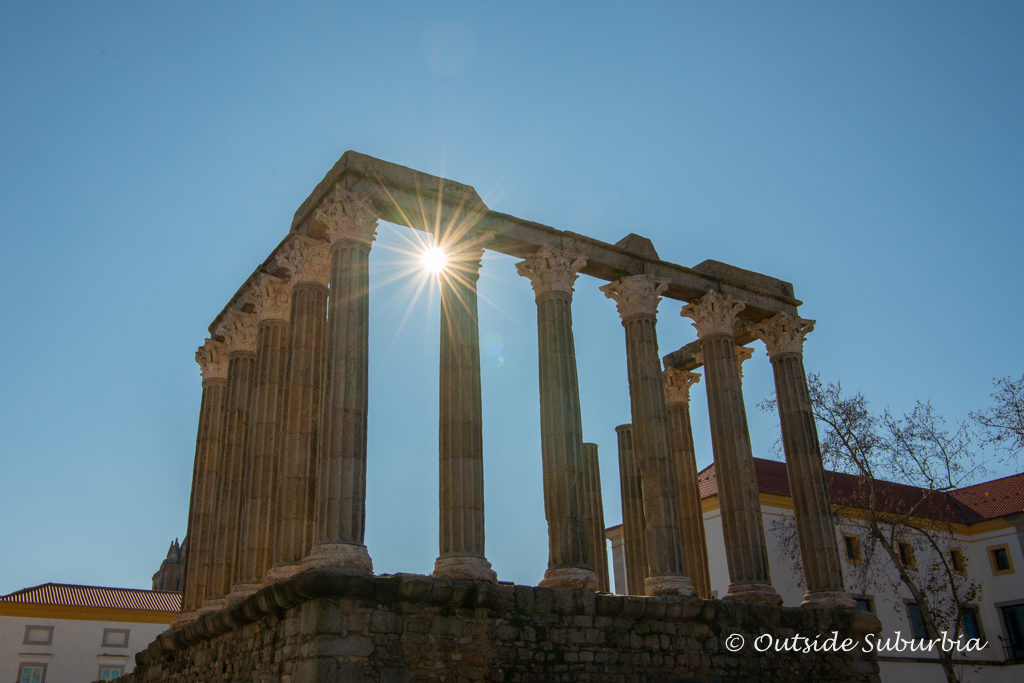
WHAT IS IN THIS POST
Our Day trip to Evora, Portugal
When we arrived in Evora on the day of New Year’s eve there were not many people in the usually busy streets. The smell of roasting chestnuts welcomed us and we had most places to ourselves expect a few local visitors. We wandered down the shopping streets, visited the ruins and monuments and found that there were more things to do in Evora Portugal than we expected and wished we had spent the night in town and visited the nearby wineries and cork factories.

Pedro from The Portuguese Buddy who can had taken us on our day trip to Sintra, picked us from Lisbon for our day trip to Evora. It was a quick 70 miles drive south of Lisbon to Evora located in the fertile Alentejo region. After seeing all the Evora attractions, and a leisurely lunch we stopped at the Megaliths of Cromlech Almendres which are older than the Stonehenge and stayed till the sunset on what was the last day of the decade!
Things to do in Evora, Portugal
Originally known as Ebora, Evora remained an important Roman military center. Évora was an important Roman town because of its location on a trade route to Rome and was known for its wealth of wheat and silver. From the eighth to the 12th century, the Moors ruled Évora. During its Renaissance glory years, Évora was favored by Portuguese kings. The university was here founded by the Jesuits in 1559. (Another ancient university that you must visit is the one in Coimbra, the Baroque library there is amazing ).
After 1640 the city became a center for music study and performance in connection with the cathedral and university. The historic center of the city, with a defensive wall dating from the Roman, Moorish, and whitewashed houses adorned with azulejos (glazed tiles), was designated a UNESCO World Heritage site in 1986.
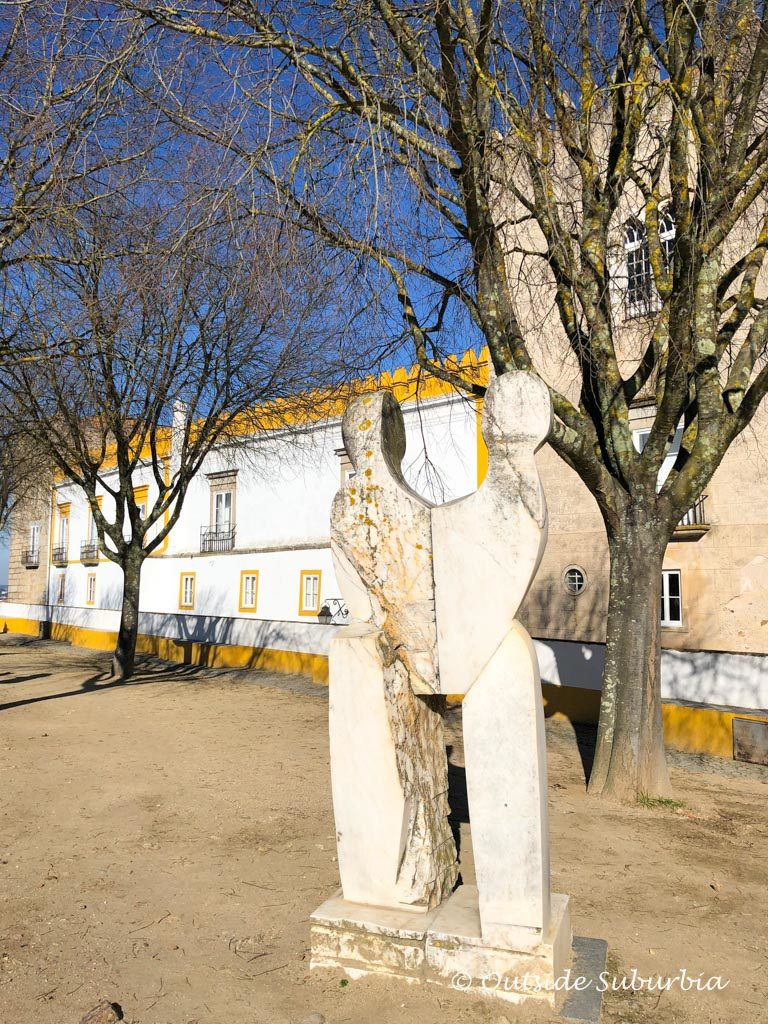
Aqueduct of Silver Water (Aqueduto da Água de Prata)
If you are driving into Evora from Lisbon, the first thing you see is the massive Aqueduct! The aqueduct provided clean drinking water to Evora by connecting the city to the nearest constant flowing river which was 9km to the north. The water flowed through a complex set of structures that included long tunnels, deep valleys, and over massive stone aqueducts. This clever design meant that the water from the river (Ribeira do Divor) could flow unassisted into the Praça do Giraldo, the main plaza of Evora.
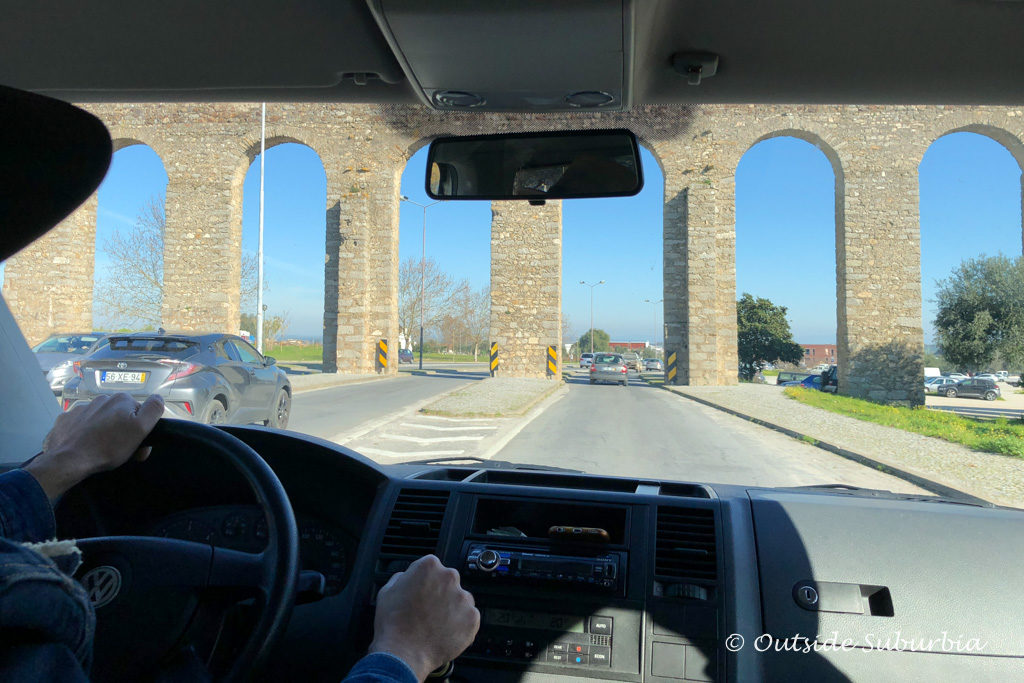
As the arches enter the city of Evora, you can see shops, houses and businesses being constructed underneath them. The best streets to view the aqueduct are around the Rua do Cano, Rua do Salvador and Travessa das Nunes. Probably one of the cool things to do in Evora is to see these arches up close.
The Aquaduct of Silver Water was started in 1531 and took 6 years and was designed by Francisco de Arruda, who is also the designer of the Tower of Belem. The silver (Prata) in the name of the aqueduct has a dual meaning: the silver implies the crystal clear waters from the Divor River that flowed into Evora, and the huge amount of silver that had to be paid for the costly project.
Roman Temple of Évora (Temple of Diana)
Once you make your way past the aqueduct and through the medieval walls of Evora Portugal, the first thing you see is the Roman Temple of Evora. The ancient Roman temple made of marble and granite looks almost out of place in Portugal. The 14 Corinthian columns, mark the Roman temple that once stood here. These towering pillars are also known as the Temple of Diana and one of the best things to see in Evora.
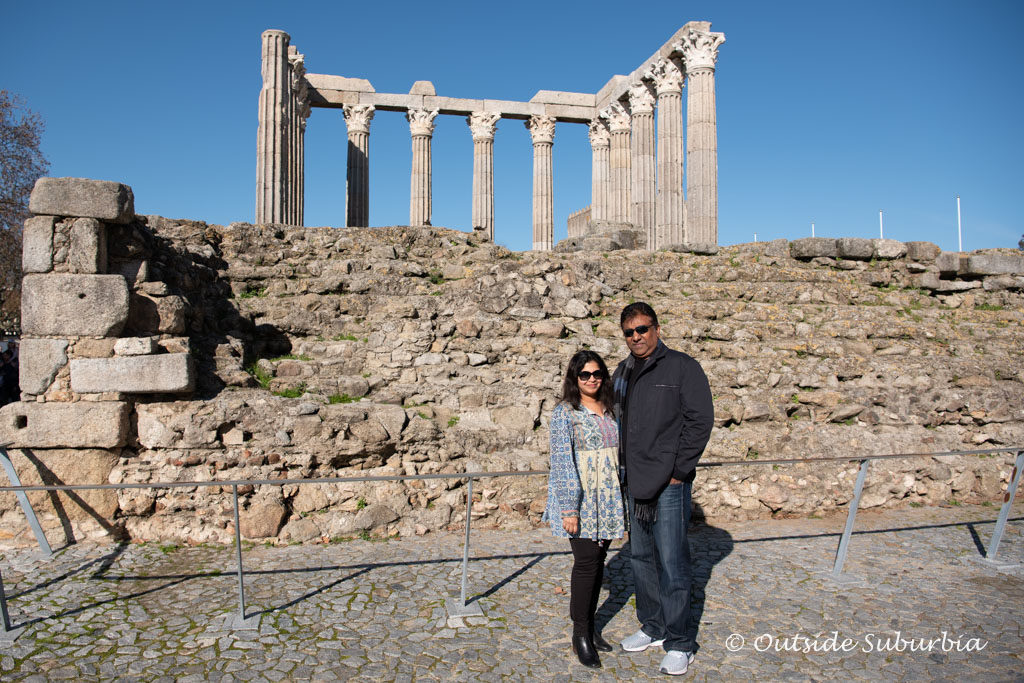
Although it is widely referenced at the Temple of Diana, historians say that there is no clear evidence of any association of the temple with the Diana, Roman goddess of the hunt. But the associations stem from a legend created in the 17th century by the Portuguese priest Father Manuel Fialho. Built in the 2nd or 3rd century, it is said that the temple might have been dedicated to Zeus, the King of the Gods, and the Roman god of Jupiter!
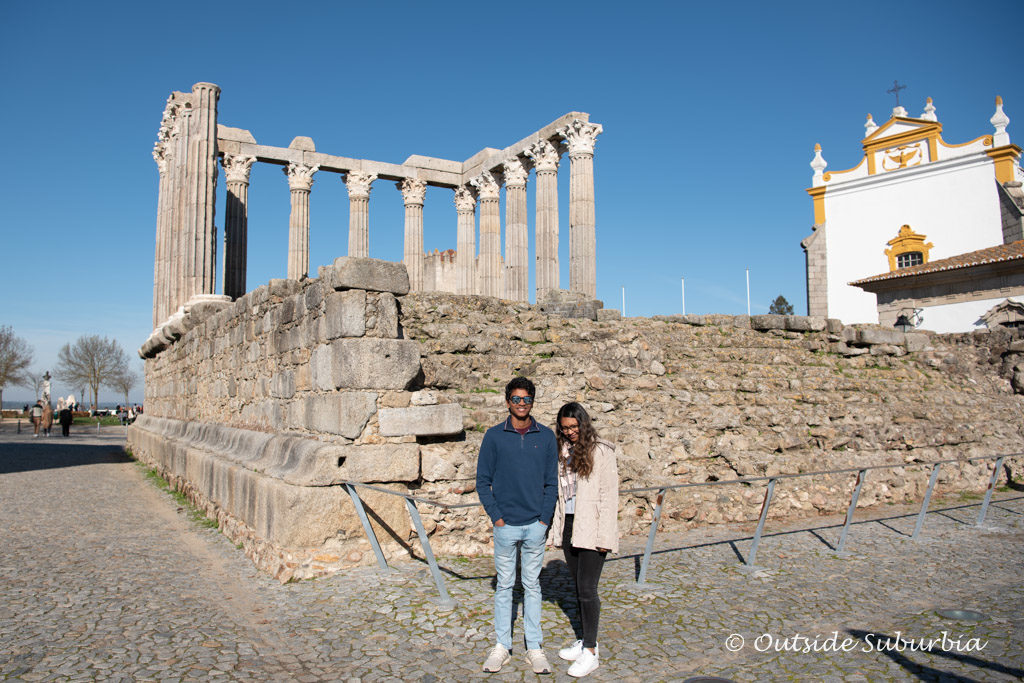
Evora Cathedral (Catedral da Sé)
Don’t miss the rather simple looking building that is across from the Roman Temple with two mismatched towers – the Evora Cathedral or Catedral da Sé. Catedral da Sé is one of the top Evora attractions. The Sé has two asymmetric towers: one tower finished with a blue-tiled coned spire, while the other is a fortified clock and bell tower.
The Evora Cathedral took 60 years to complete. The layout of the cathedral follows the classical Latin cross plan, and the interior contains many of the same design features as found in the Sé Cathedral of Lisbon.
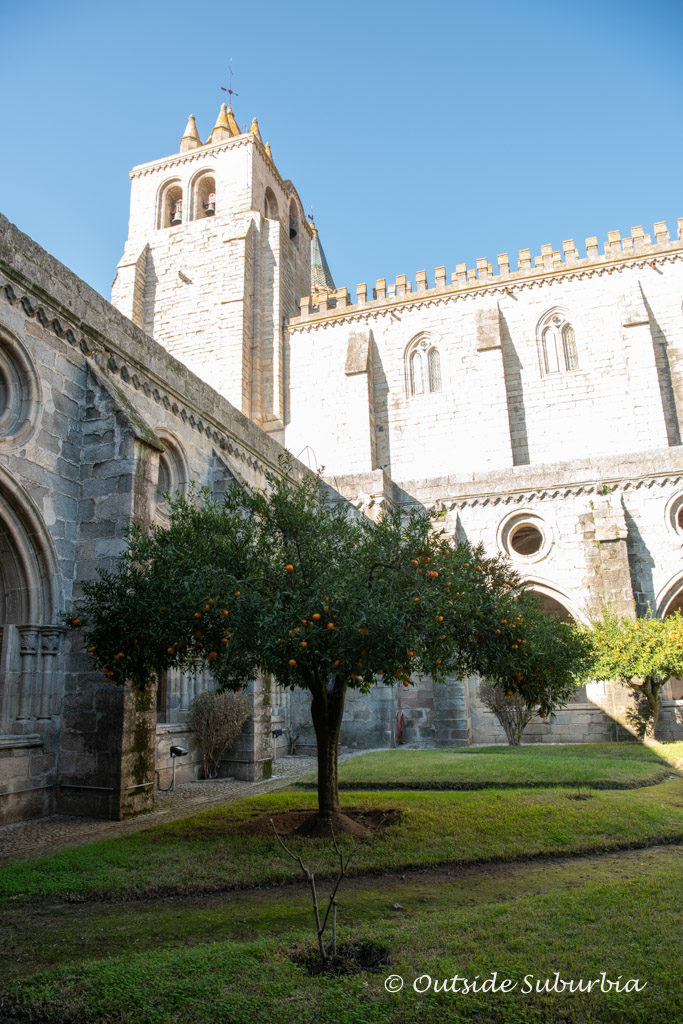
The cathedral is dedicated to the Virgin Mary. A rare representation of a pregnant Mary is located at the altar. The interior of the Evora Cathedral is pretty impressive. Visit the treasury that contains sacred artifacts and rare pieces made of gold, silver, and other precious metals.
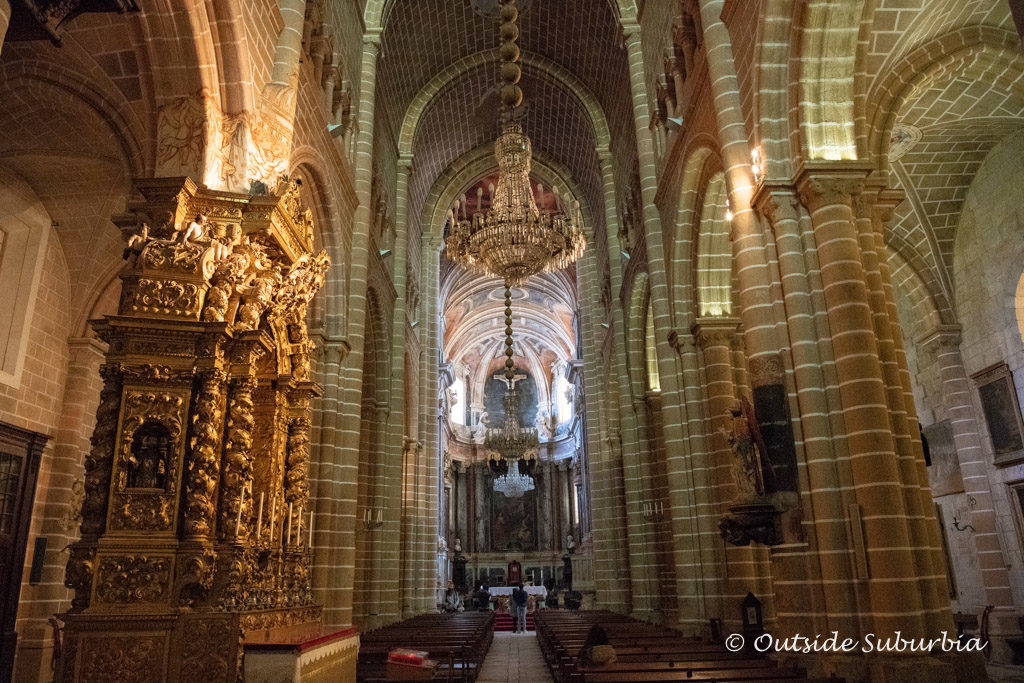
You can climb up to the roof of the Cathedral to see great views over Evora. The access to the roof is via the bell tower and 135 steps through a narrow spiral staircase.
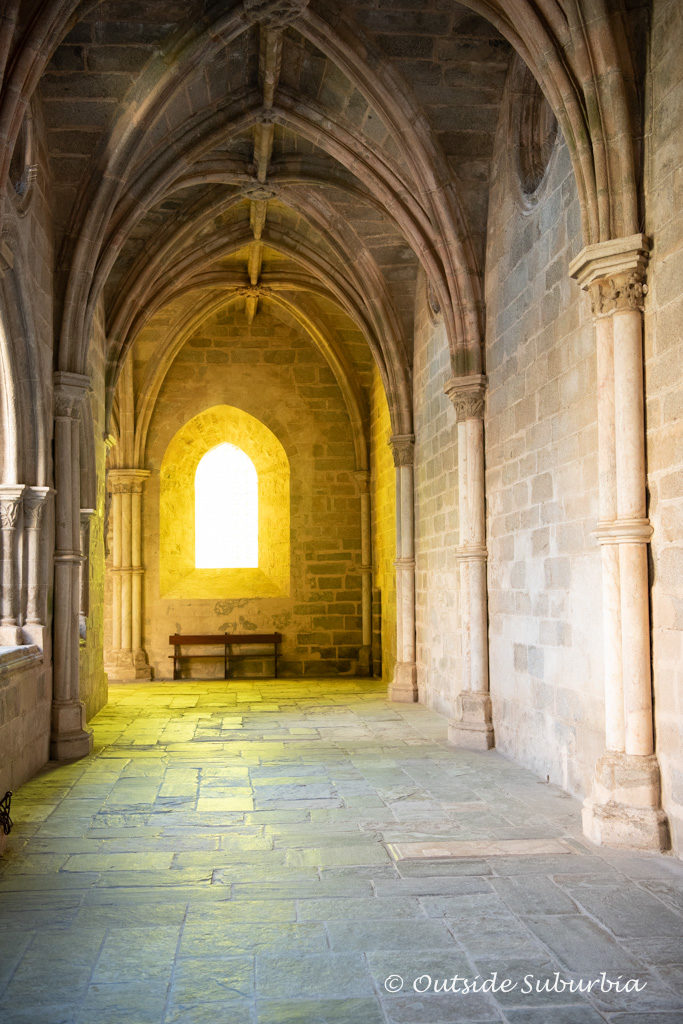
Church of St. Francis (Igreja Real de São Francisco)
While the main draw for those visiting the Gothic and Moorish style Church of St. Francis is the little chapel behind the altar, this church is not to be missed when visiting Evora, Portugal. The Igreja de Sao Francisco church has recently undergone a major restoration project that has transformed it into a brilliant white building.
The church is impressive with beautiful Azulejo tiles very similar to the ones we saw in Porto and an immense nave. Built between 1475 – 1550, the Church of St. Francis is the largest of its kind in all of Portugal and more impressive than the Se. The admission is free, you only have to pay to go to inside the Chapel of Bones next door.
The Bone Chapel Of The Church Of St. Francis (Capela dos Ossos)
The first thing our guide mentioned about Evora was this chapel inside the Church of St. Francis – Chapel of Bones. It is one of those Evora things to do you can’t miss, I suppose… it was eerie for sure!
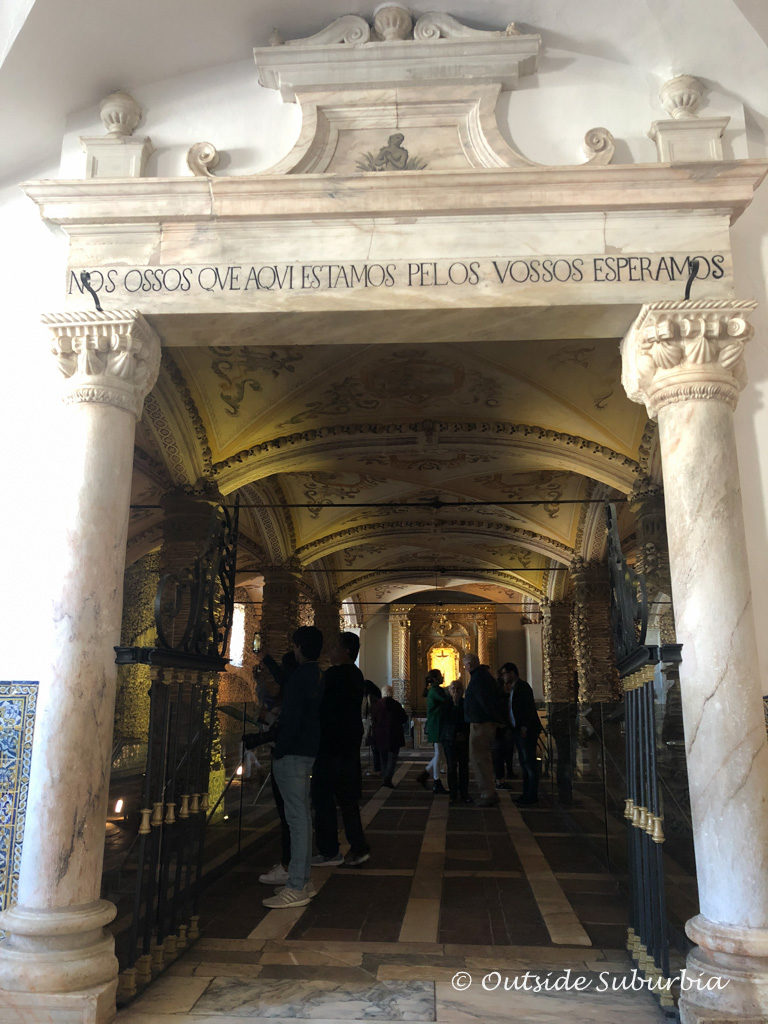
As you enter the sign on the door of the chapel reads “Nós ossos que aqui estamos, pelos vossos esperamos“. Which means “We bones that are here await yours“. The Bone Chapel of Evora was built by a Carmelite monk during the 16th-century.
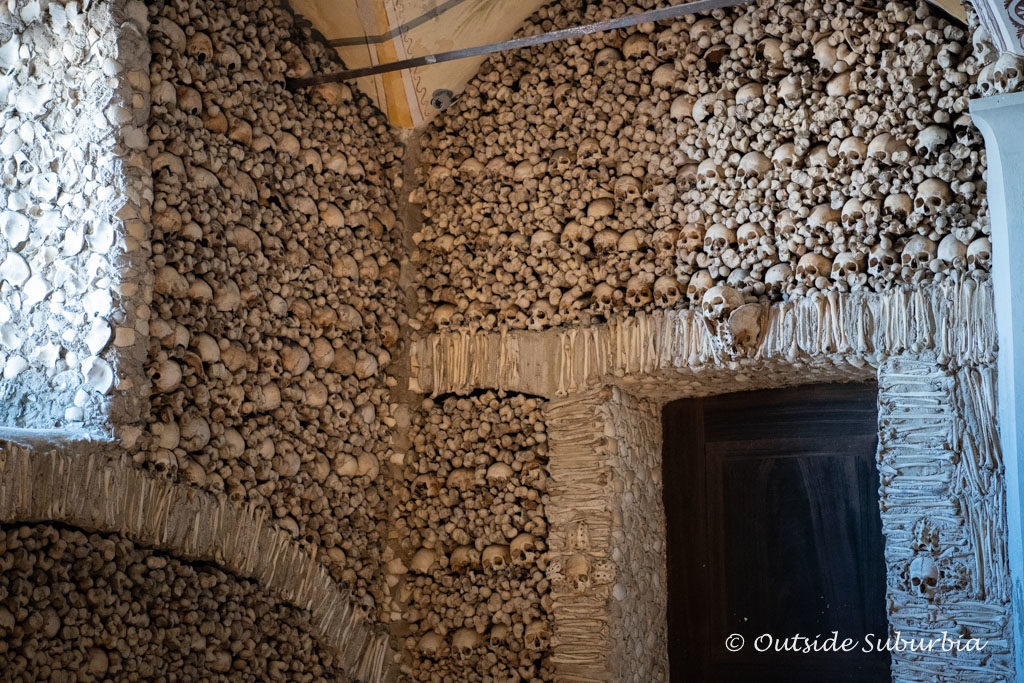
The Evora Bone Chapel is an ossuary built with the remains of bones of 1,245 monks. This practice of moving bones from cemetery plots into ossuaries after a period of time in the ground, usually seven to ten years, was common throughout Catholic Europe. They were moved to make room for the other bodies that needed to be buried and also it was a way for the bones to be closer to God in a place of worship.
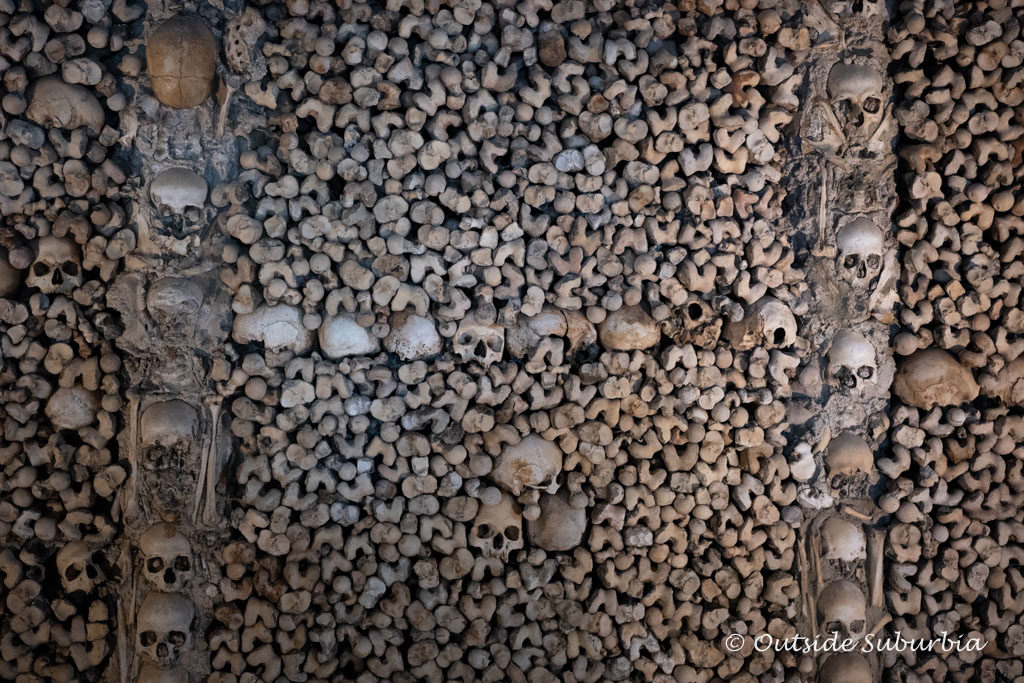
The bone chapel is dim-lit and when you enter I was a little taken back by the walls of skulls and femurs. After you get used to it, it is quite an incredible display of bones across all the walls and columns of the chapel. If you are visiting Evora with kids you might want to give this a miss. My teens were ok with visiting this Bone Chapel of Evora.
Giraldo Square (Praca do Giraldo)
Giraldo Square with its beautiful fountain in Evora’s main square is a great spot to relax for locals and tourists. It was built as a tribute to Fearless Geraldo Geraldes, the man who conquered Evora from the Moors in 1167. After enjoying a meal here stroll along Rua 5 de Outubro where you will find many stores selling various pottery, tile works and authentic handicrafts made of cork. The Alentejo region is known for the cork trees and its wine.
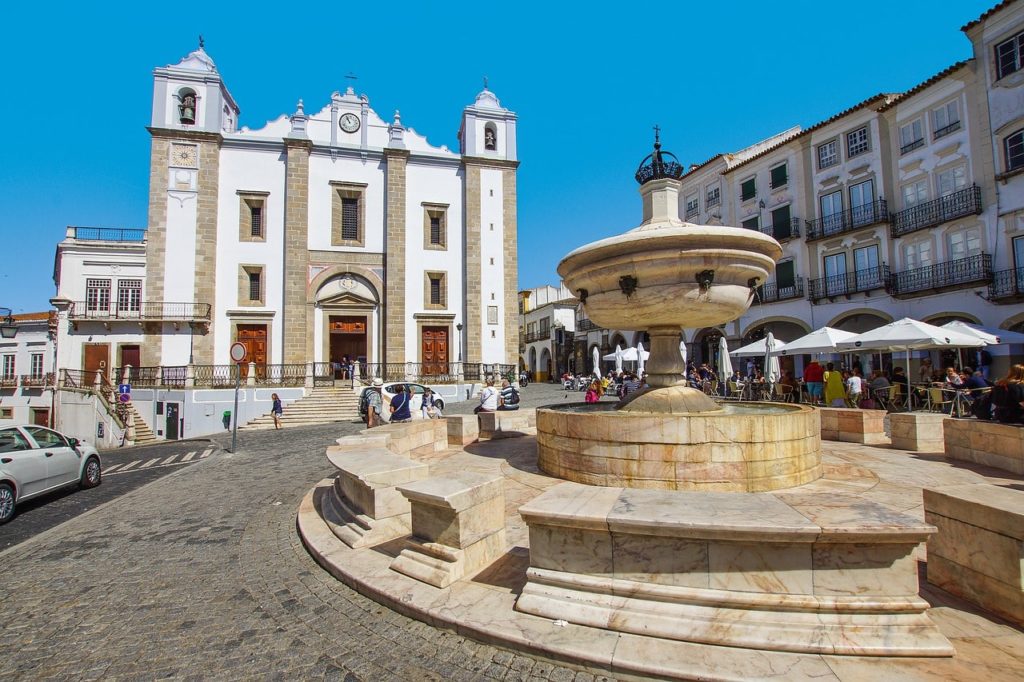
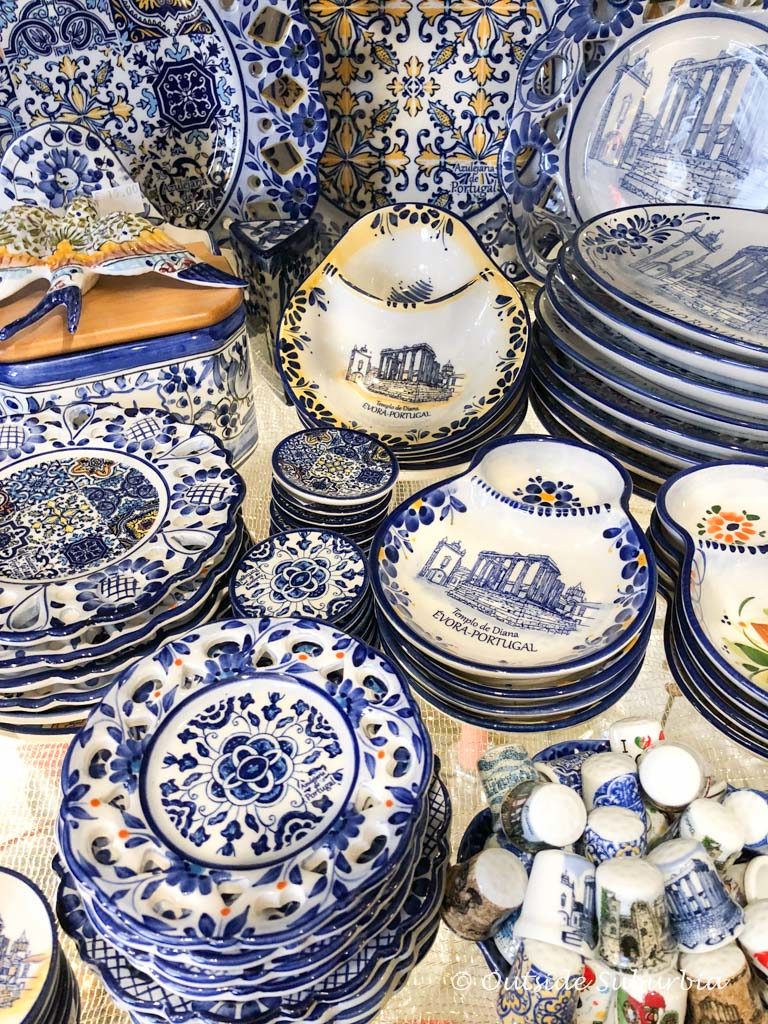
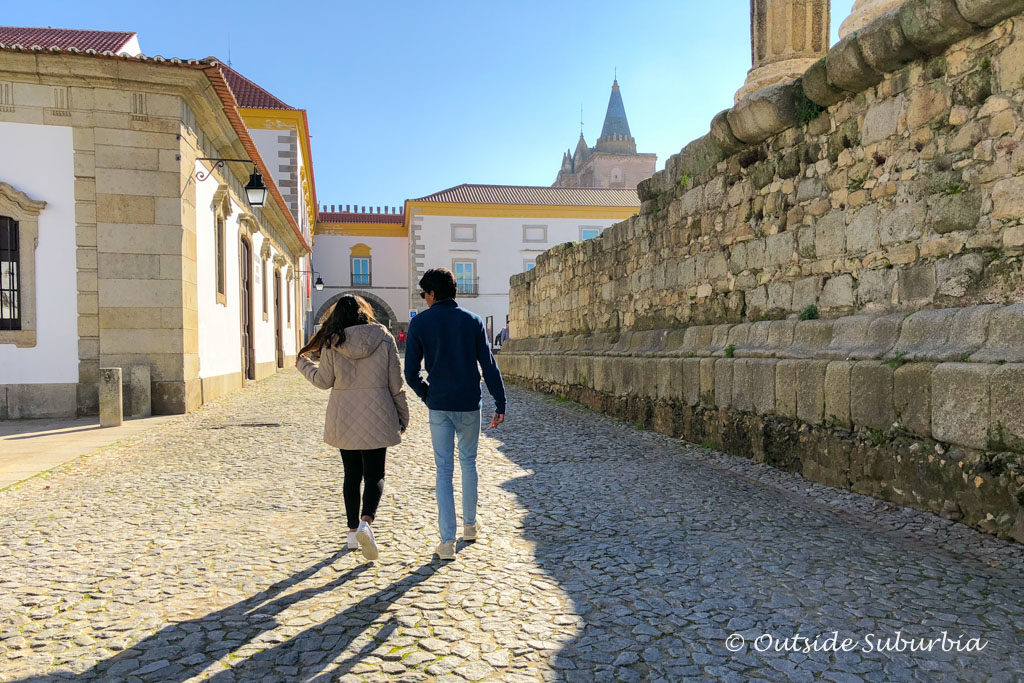
One thing we missed on our Evora things to do, was visiting The Museum of Évora. Since it was New Year’s eve it was closed. The downside of visiting during the offseason, but I would take that over dealing with crowds and summer heat!
The museum stands where the Roman forum once sprawled with an excavated section of the forum serving as the museum’s courtyard. It is said to have a delightful mix of Roman finds, medieval statuary, and 16th-century Portuguese, Flemish, Italian and Spanish paintings. Here is their website if you decide to check it out.
Almendres Cromlech
Located just outside Evora are two megalithic sites that are older than Stonehenge! Thought to have been constructed between 5,000-2,000bc, the complex is believed to be part of an important religious site. It is regarded as the finest example of prehistoric monuments in South Western Europe. Megaliths of Cromlech Almendres is free and you can walk on the grounds and touch the stones (although I would advise not to!).
Many of the stones are decorated with patterns and engravings which all add to the mystery of the site.

Cromlech Almendres is about 18km east of Evora. While there is no public transportation to the site, the megalithic monuments are easy to find if you follow the signage. There is no physical address but driving directions from Evora are simple and you can get to it if you have a car or on a tour. Make sure to add this offbeat site to your Evora itinerary, you can easily fit it into your Evora day trip.
Directions from Evora to the Almendres Cromlech: Head east for about 8-10 km on N114. Then, turn left onto CM1075. The second road a dirt road that is bumpy with many twists and turns.
Where to eat in Evora
Make sure to have a meal at restaurantefialho.com (Comes recommended by our guide Pedro who has relatives here). Restaurants in Evora are the ideal place for visitors to be introduced to Alentejo food, they are known for the lamb stew, game, and “sopas de pão” (bread stew/bread soup). You can also find many restaurants and cafes in Giraldo Square.
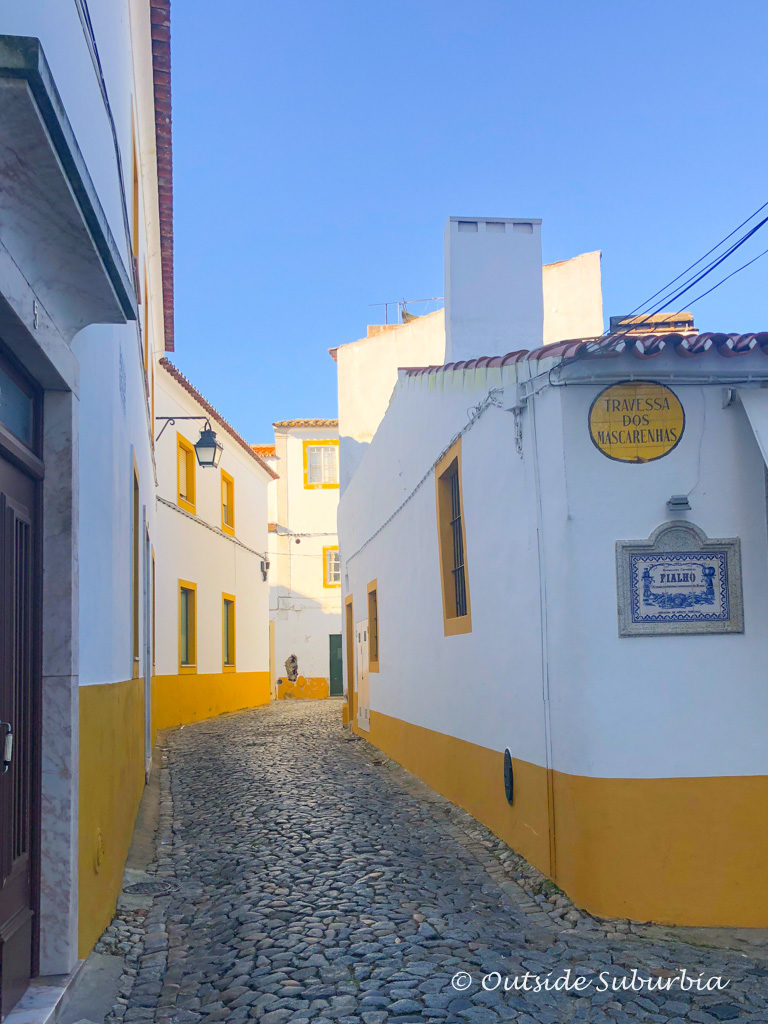
Our lunch in Evora consisted of brined olives, house wine, local cheese and some lamb stew and chicken with Alentejo bread. See this post for the different Portuguese pastries you should try in the different cities.
Where to stay in Evora, Portugal
If you have more time, plan to spend a night, there are lots of things to do in Evora and in the Alentejo region of Portugal. While you can see most of Evora in a day, I hear it is pretty crowded in the summer months and you might benefit from staying a night and seeing the town after the day-trippers have left. We wish we had made it to a few wineries and the cork factories. Unfortunately, they were closed on the day we visited.
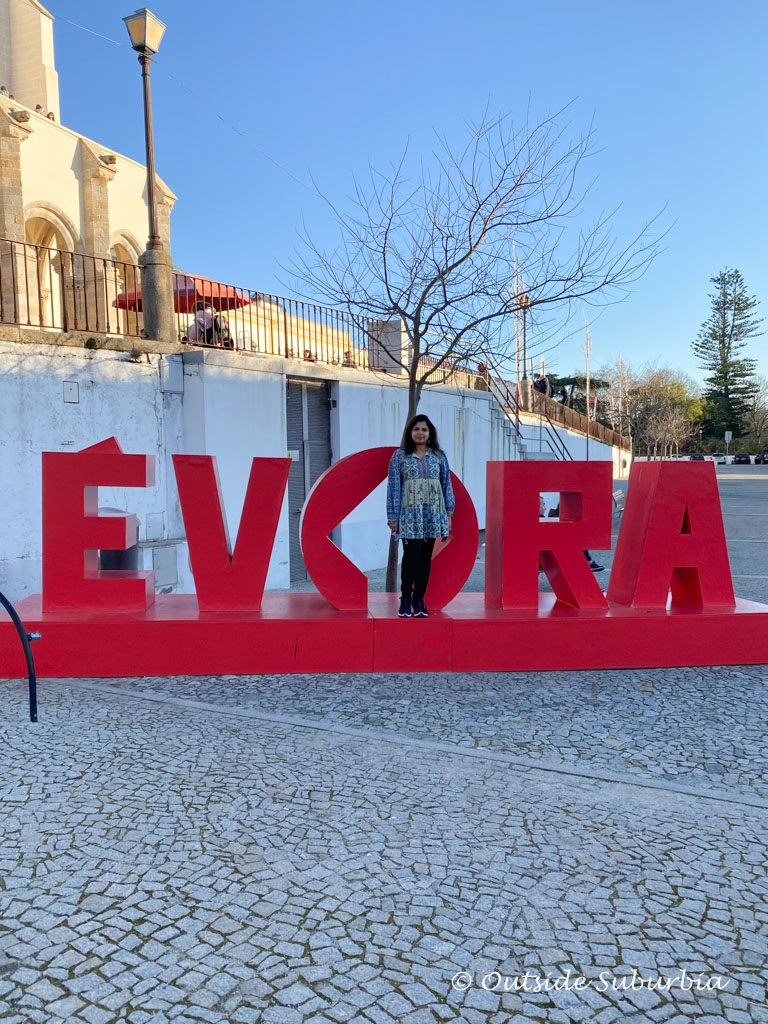
The 15th-century Convento do Espinheiro is a great choice if you want to spend a night in Evora. It has 92 luxurious rooms, a beautiful chapel and a restaurant in the old stone, vaulted wine cellar. Pousada Convento de Evora which faces Évora’s magnificent Roman Temple looked like another interesting place to stay. It is a monastery dating from the 15th century, it has 36 monk’s cells converted into small but comfortable rooms, retaining a sense of place and history.
Popular Evora Tours
Here are a few popular Evora Tours from Lisbon you can book if you don’t want to drive yourself or take the train.
How to get to Evora Portugal
The best way to get to Evora from Portugal is probably by renting a car or going on an organized tour. It took us about an hour and a half to get there on our day trip to Evora. We visited with our guide, Pedro, the Portuguese Buddy. Regular trains run from Lisboa Entrecampos station with a journey time of 80 minutes.
I hope I answered your questions about what to see in Evora, and that Evora is worth visiting… and you find our rough guide helpful in planning your trip. Most importantly have I given you enough reasons as to why you will LOVE a day trip to Evora, Portugal!?
Other Posts from Portugal:
Best Portuguese Desserts
Photo spots and a 3 Day Porto Itinerary
28 Beautiful places to visit in Portugal
A Scenic drive to Douro Valley
Obidos, Aveiro, Coimbra & Praia da Costa Nova
Sintra and the Portuguese Riviera
PIN IT FOR LATER
Note: This post may contain affiliate links, partnership or sponsored content. If you purchase an item via one of these links, we may receive a small commission at no extra charge to you. But as always images and opinions are our own. For more information on our affiliates and privacy policy at Outside Suburbia see here.
CONNECT WITH US

